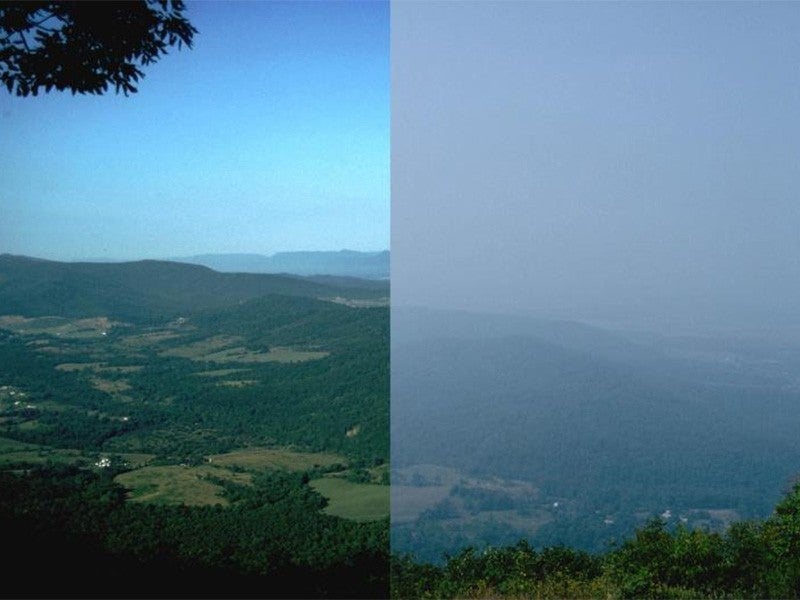EPA Must Do More for Clean Air in Parks
The Third Circuit orders the EPA to protect national parks from Pennsylvania air pollution.

This page was published 10 years ago. Find the latest on Earthjustice’s work.
If you climb the mountain, you want to see the view. That’s why the Clean Air Act includes a special program to cut haze and protect visibility in national parks and wilderness areas.
States whose air pollution impacts parks submit plans to the EPA. These plans are supposed to protect the view, and protect health, too. The plans require advanced technology to cut pollution, and a long-term strategy that will restore natural visibility.
Air pollution from Pennsylvania smokestacks has a wide reach across the northeast, impacting parks from the Shenandoah National Park in Virginia, to the Brigantine Wilderness Area in New Jersey, all the way to Acadia National Park in Maine.
Sometimes states develop strong plans to reduce haze; sometimes they don’t. Earthjustice tracks state plans around the country and engages with agencies and in court when the plans fall short. After the EPA approved a haze plan for Pennsylvania that included no controls for any of the 34 haze-regulated sources of air pollution, Earthjustice filed suit on behalf of three environmental groups: National Parks Conservation Association, Sierra Club and Clean Air Council.
And we won. The Third Circuit found EPA’s action deficient in many ways. For example, the court found that the EPA identified problems with the Pennsylvania plan, such as insufficient consideration of pollution controls, but then brushed them aside without a defensible explanation. The EPA also acknowledged that it should have considered the cumulative impacts of air pollution on all affected parks, but it did not. The court sent the rule back to the EPA for additional work to address these flaws.
People have a right to see the view from the mountaintop—the Clean Air Act says so. This latest victory in Pennsylvania is another step forward in Earthjustice’s campaign to ensure that right. But we’re not stopping there. Earthjustice has also challenged inadequate haze plans in the following states: Montana, Wyoming, Nevada, North Dakota, Minnesota, Nebraska, Virginia and West Virginia. And, we’ve secured court-ordered deadlines that have led to much stronger limits on haze pollution in Arizona, and a proposal for significant limits on haze pollution in Texas and Oklahoma.
Earthjustice’s Clean Energy Program uses the power of the law and the strength of partnership to accelerate the transition to 100% clean energy.